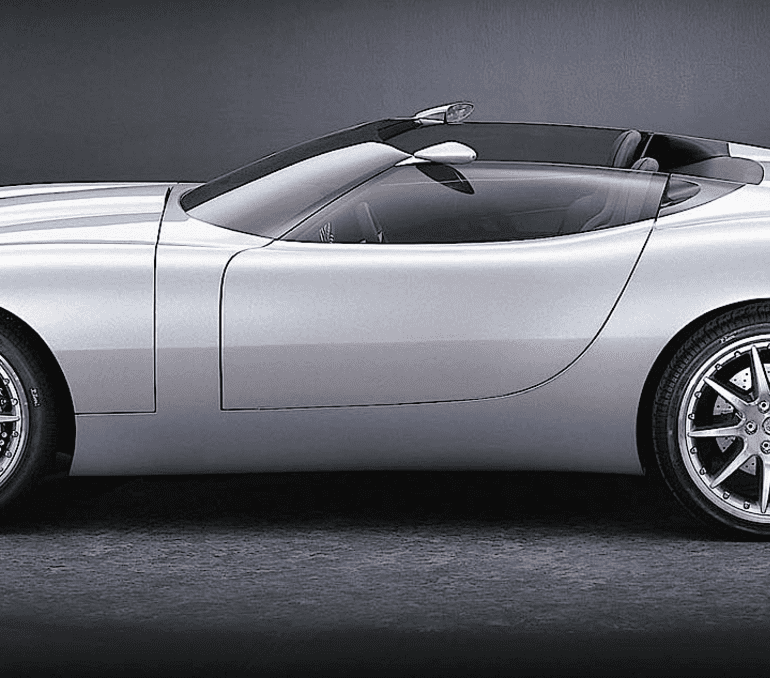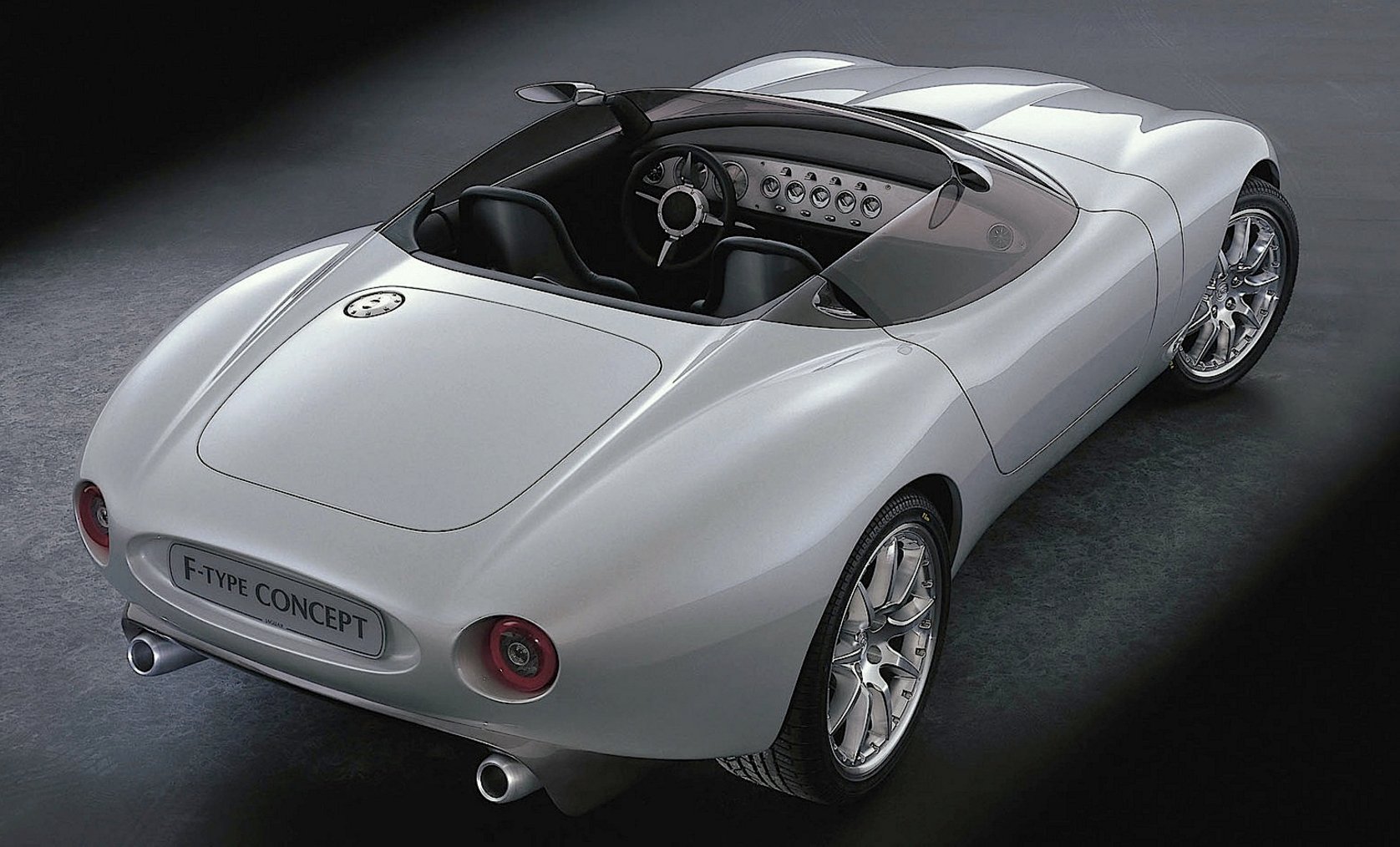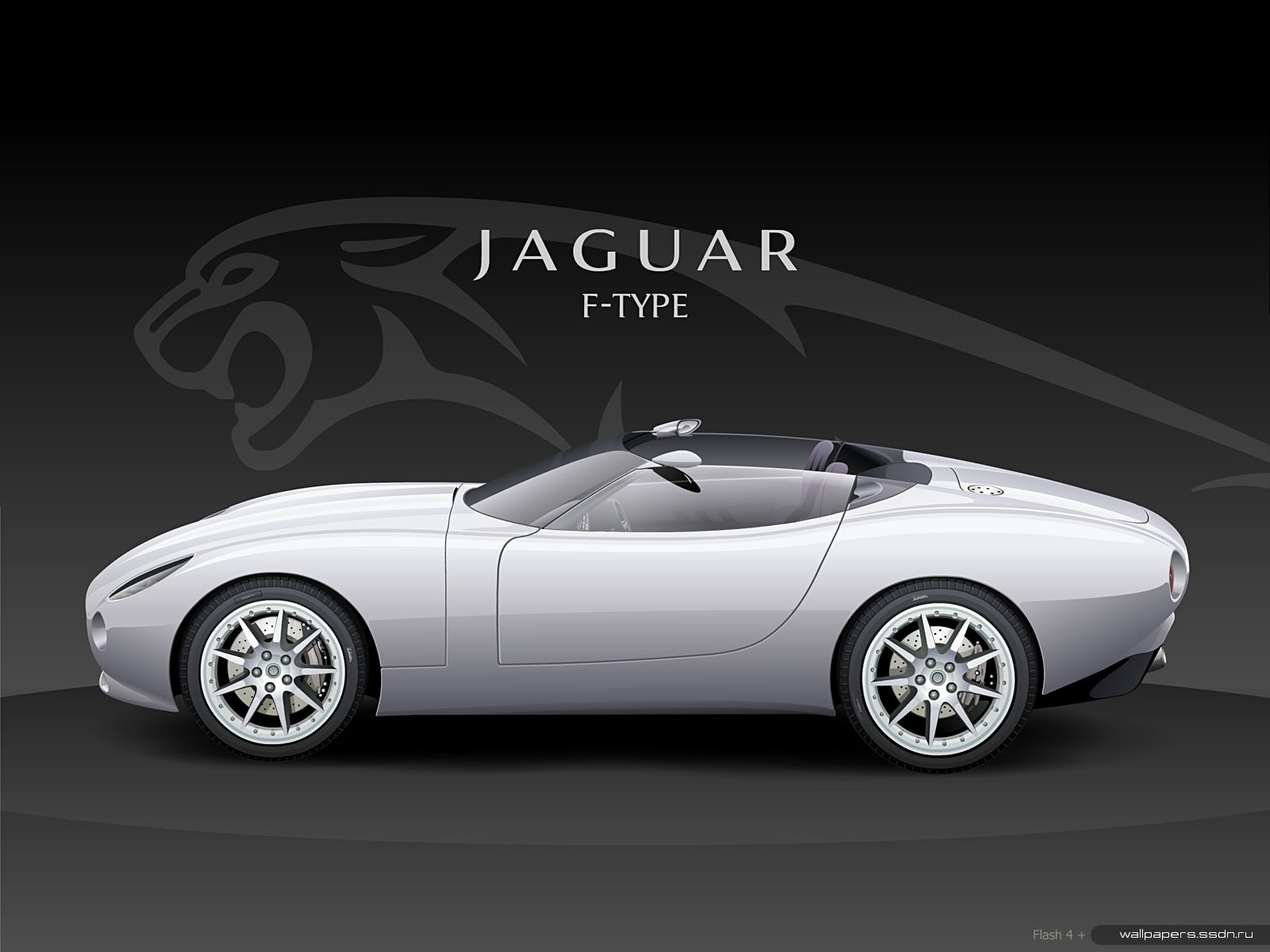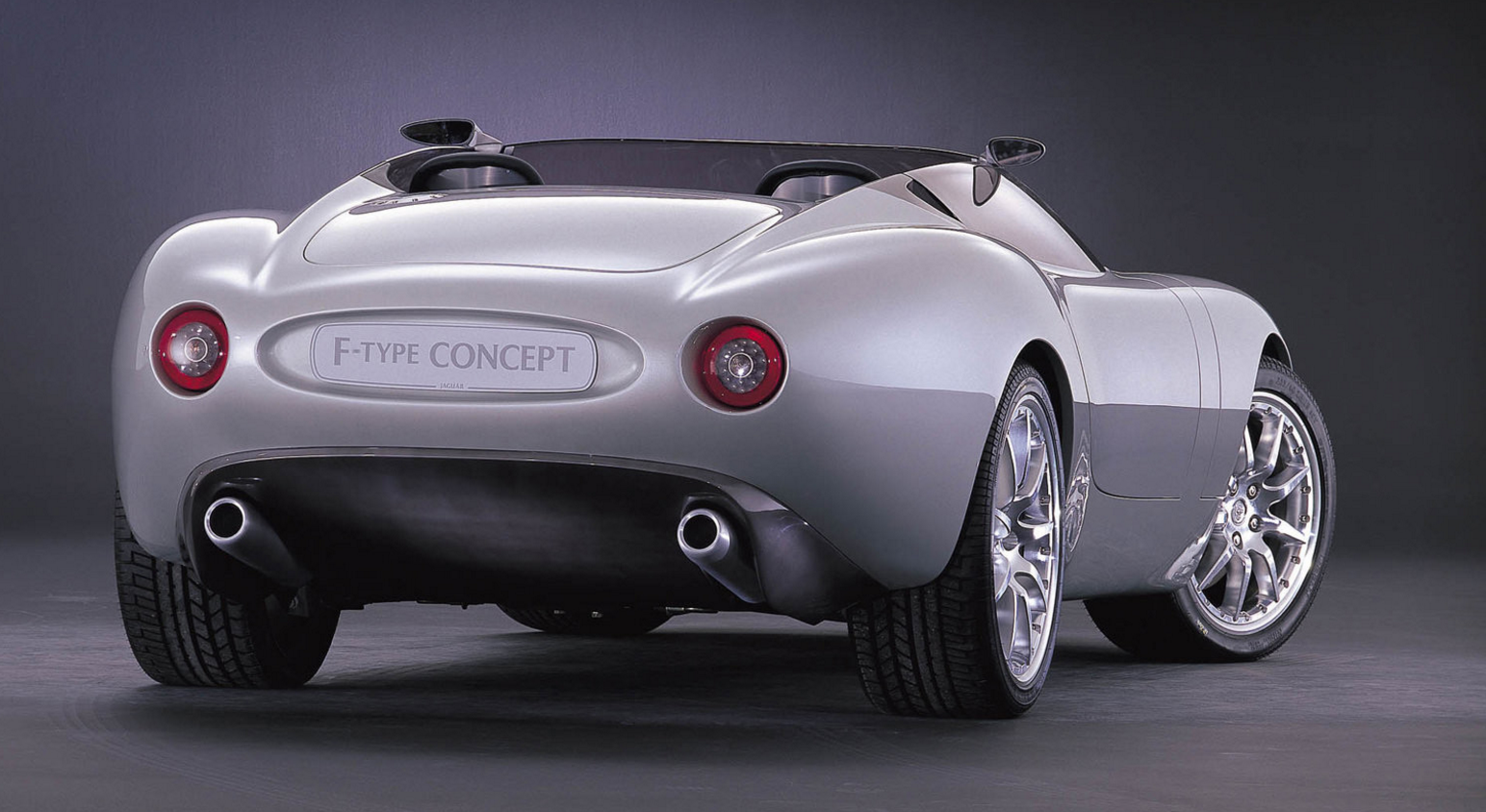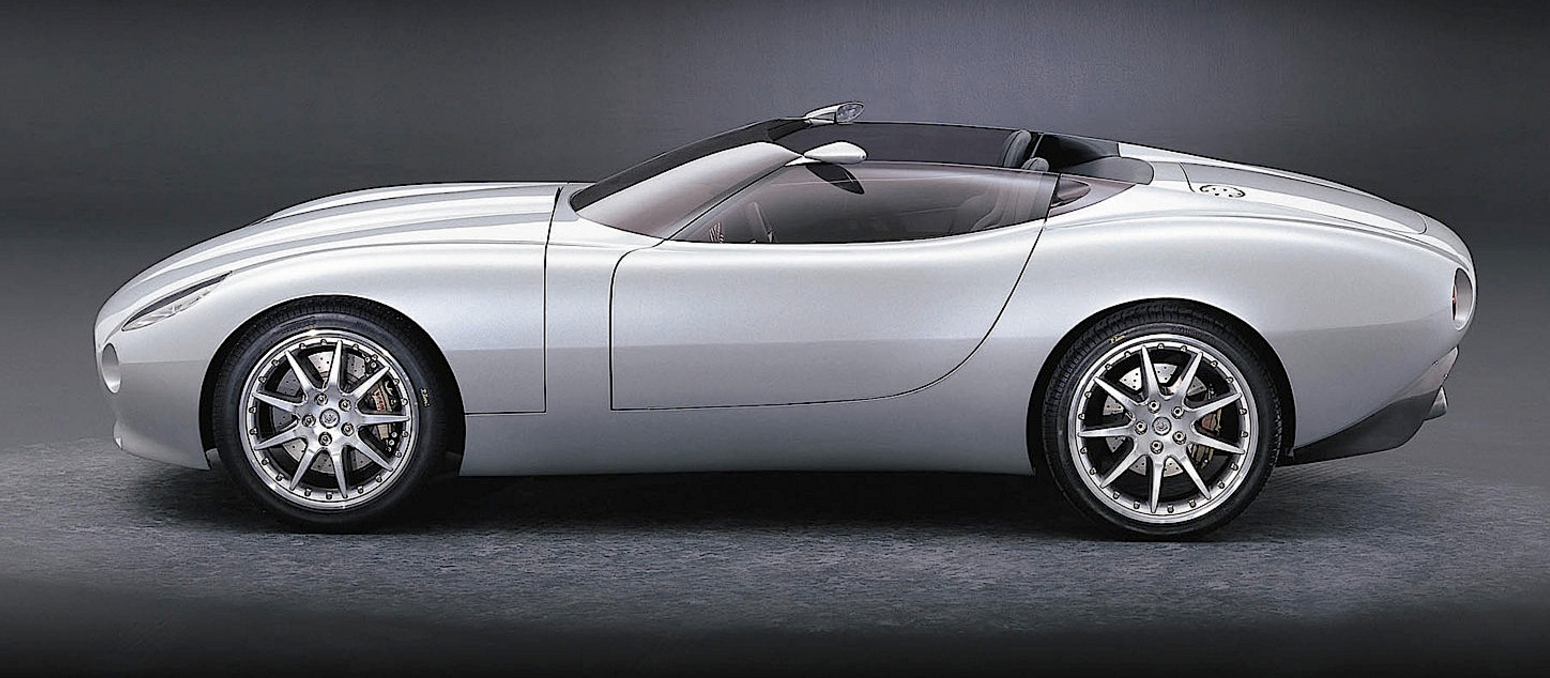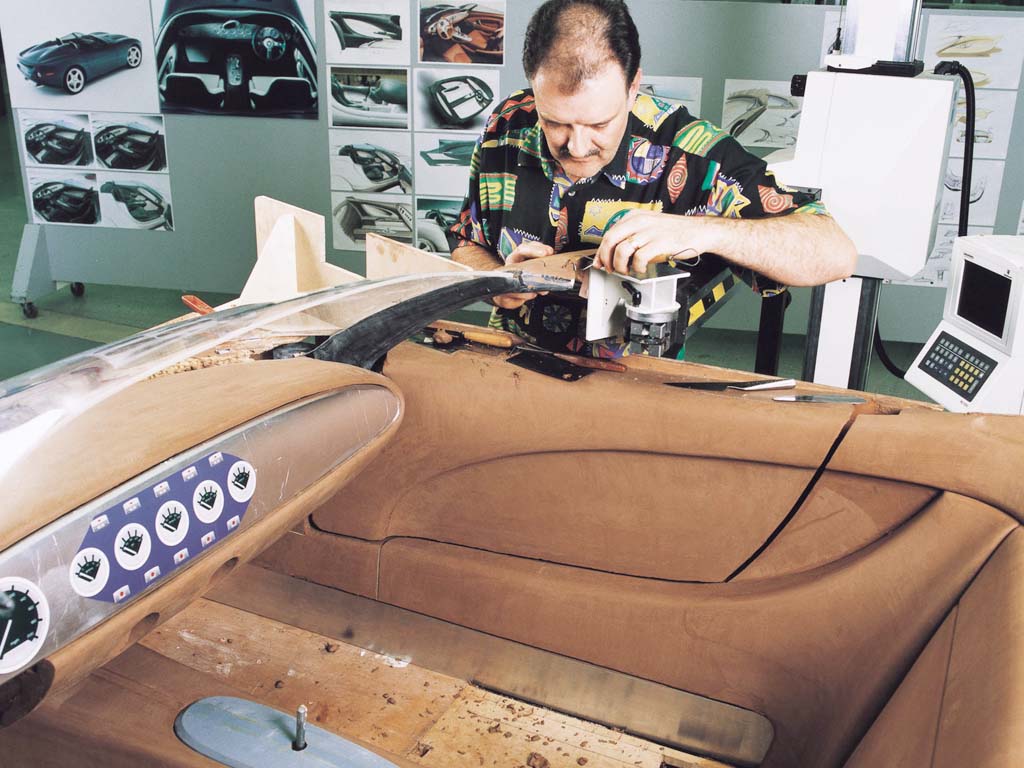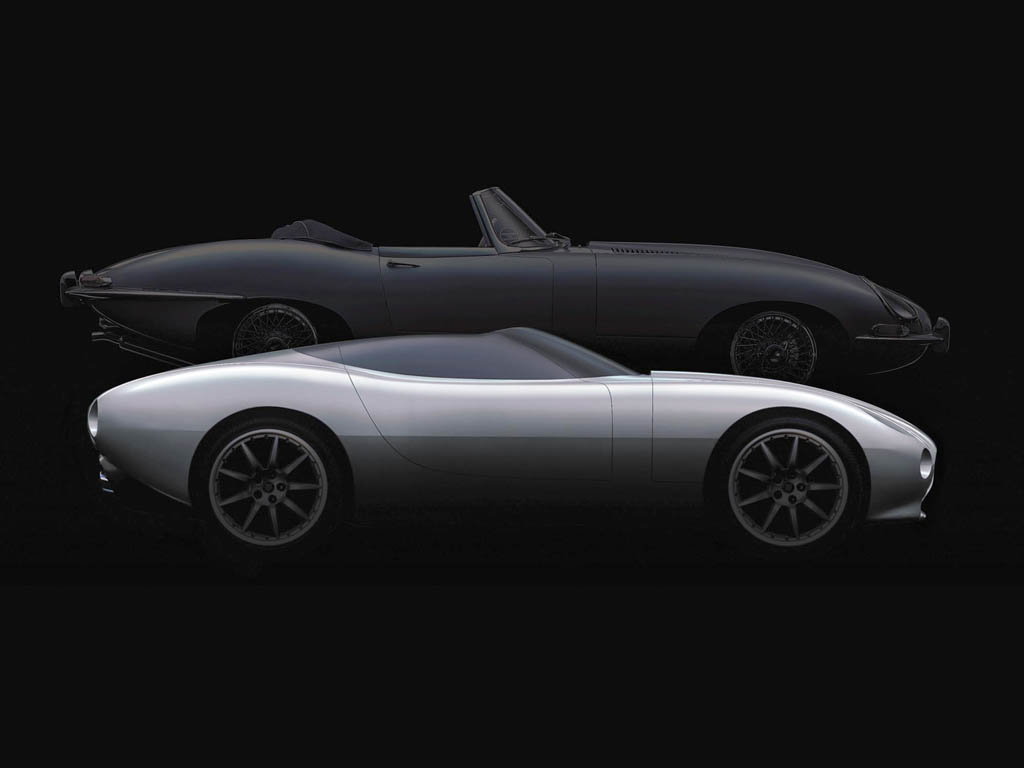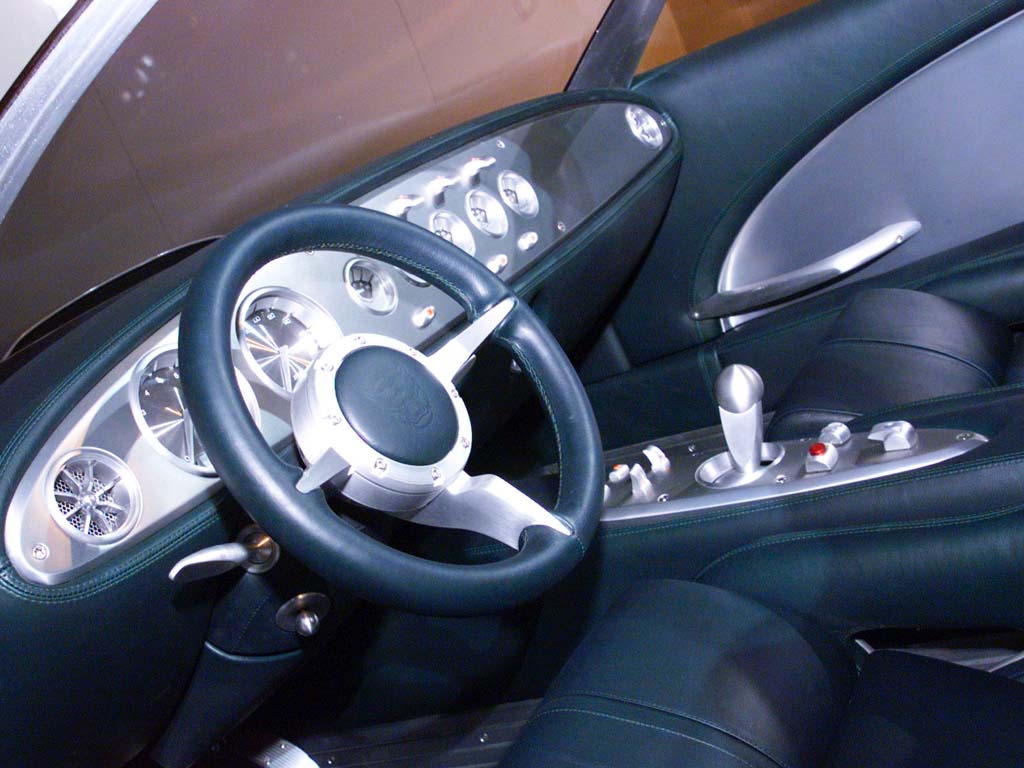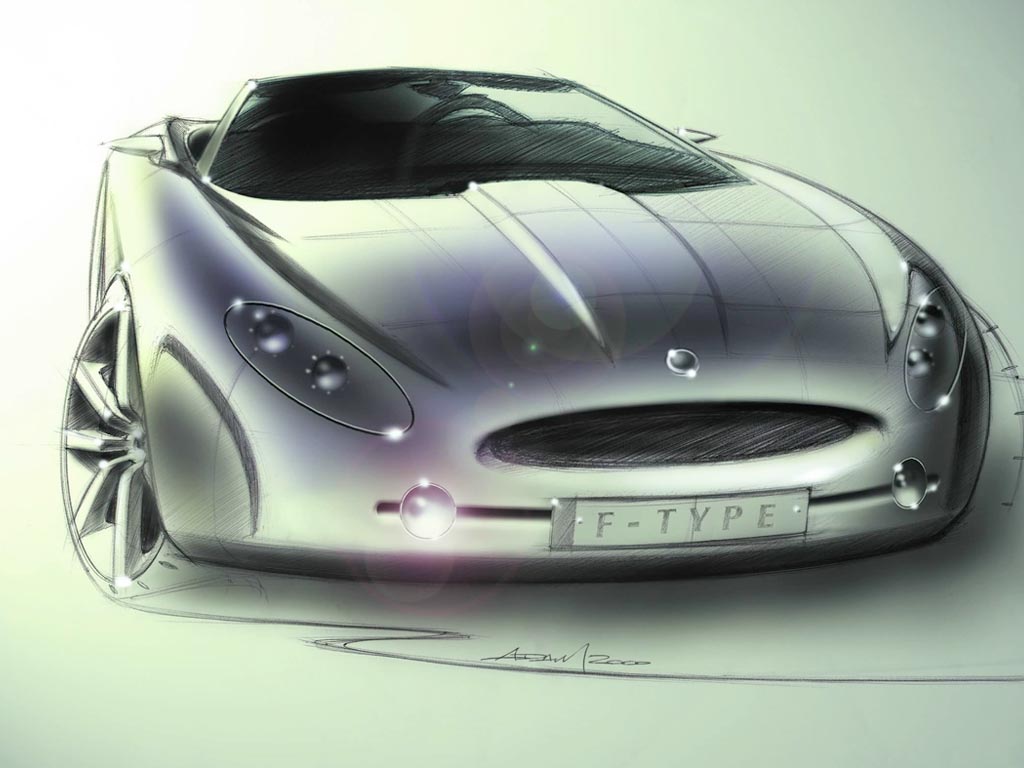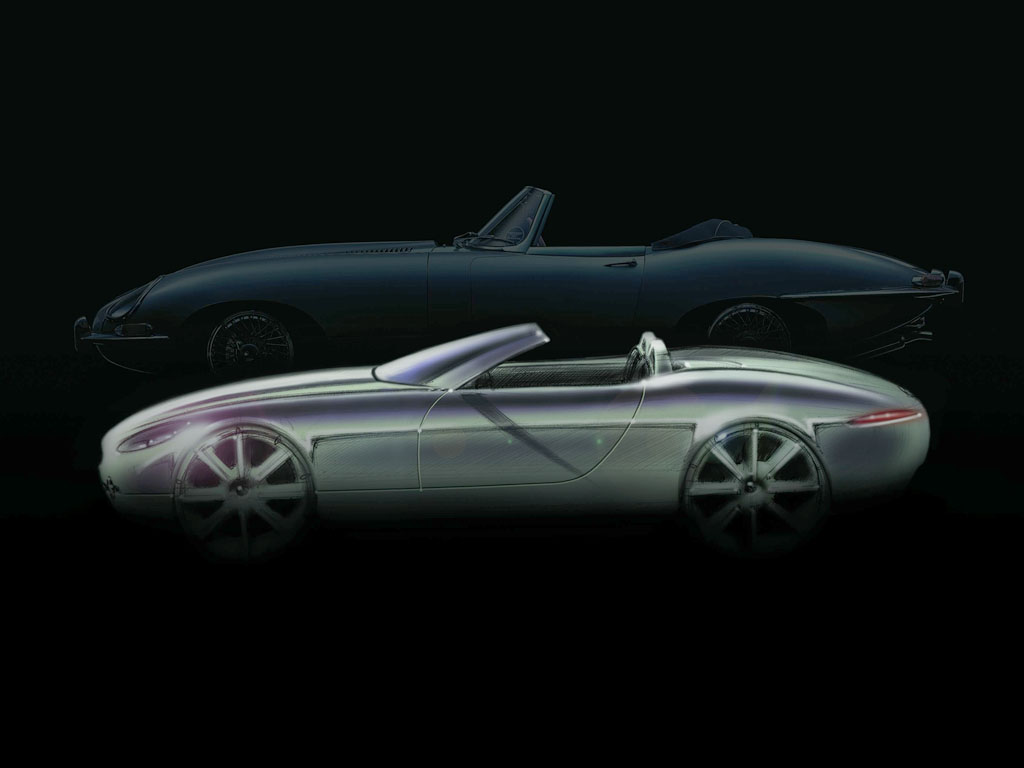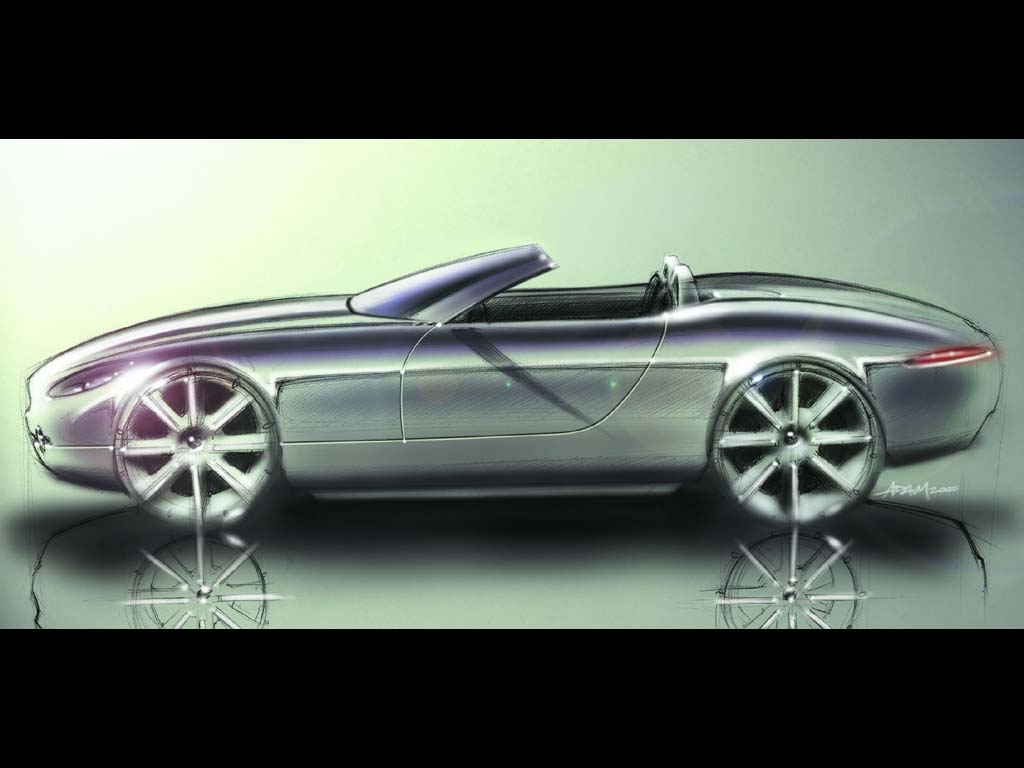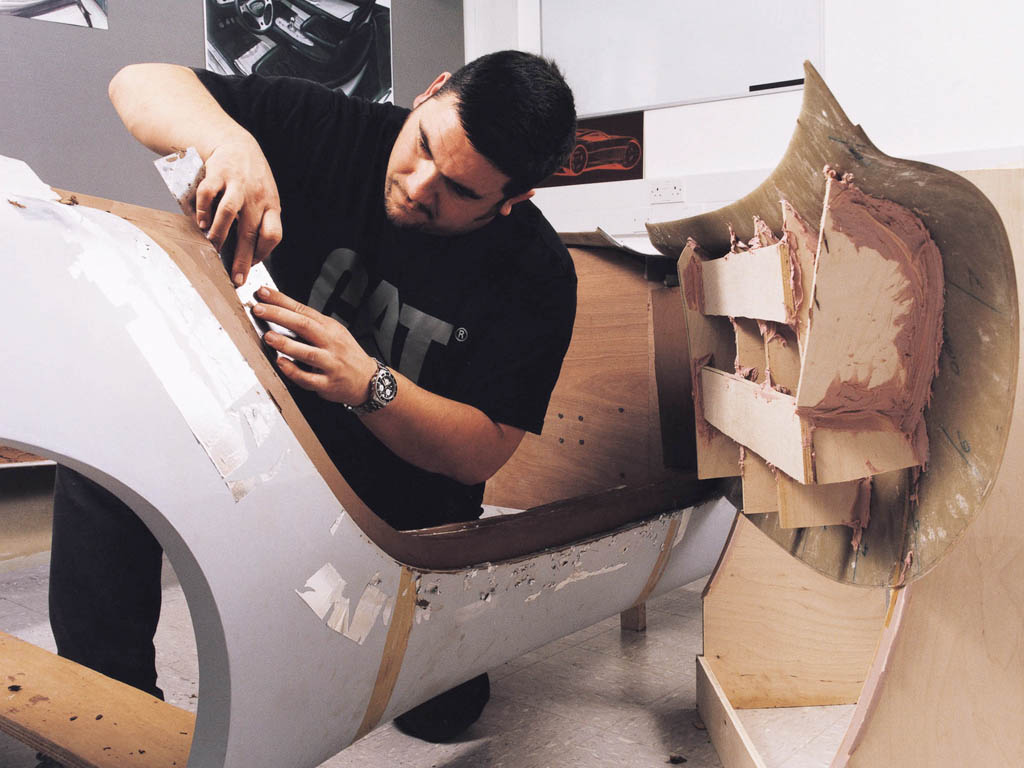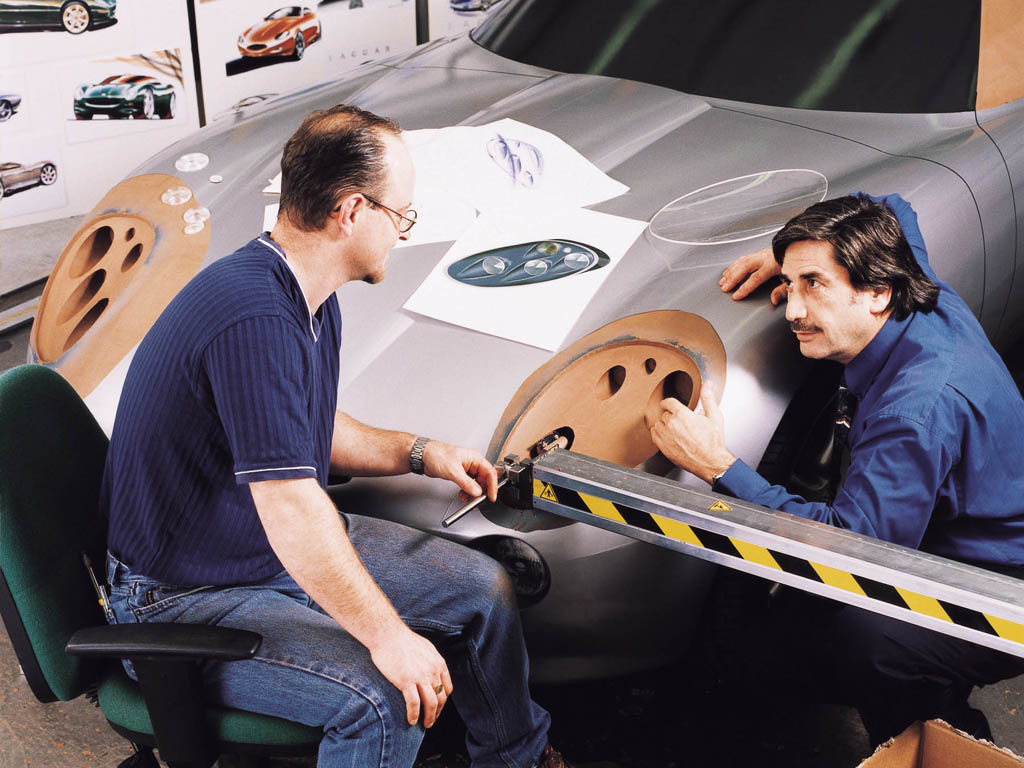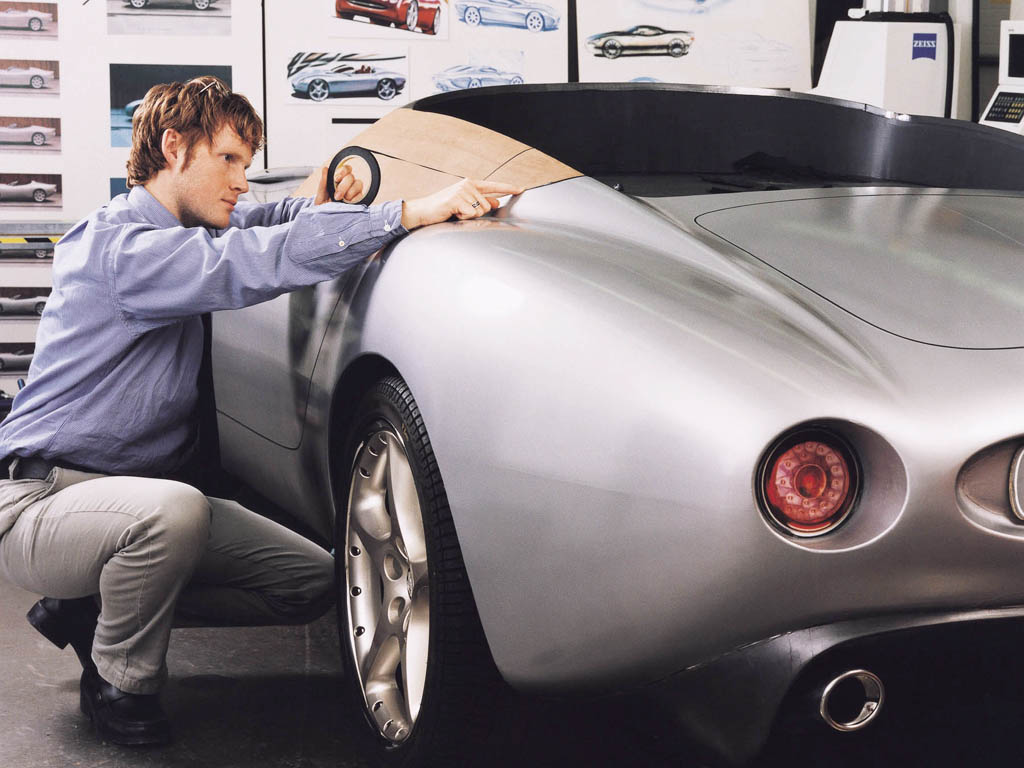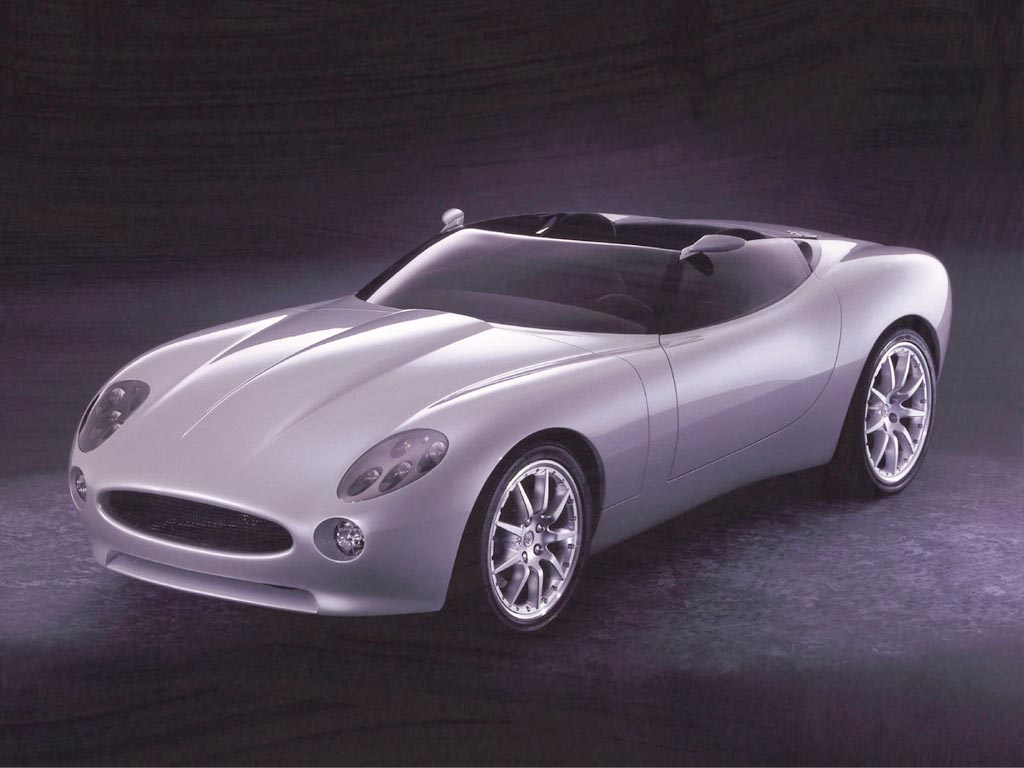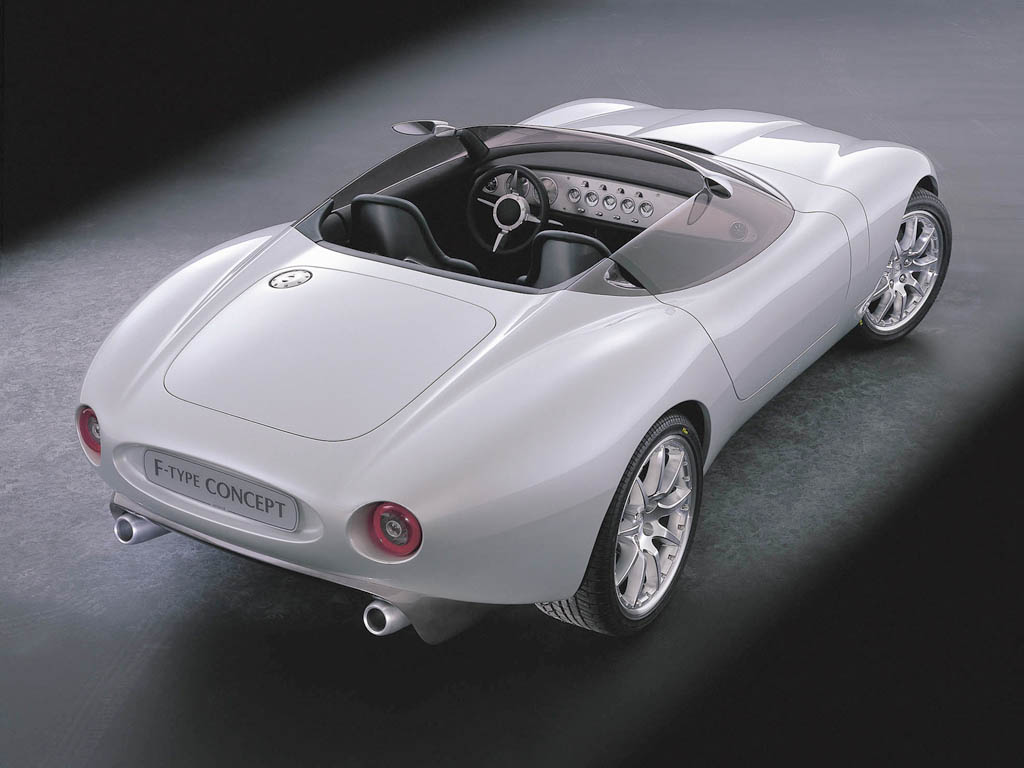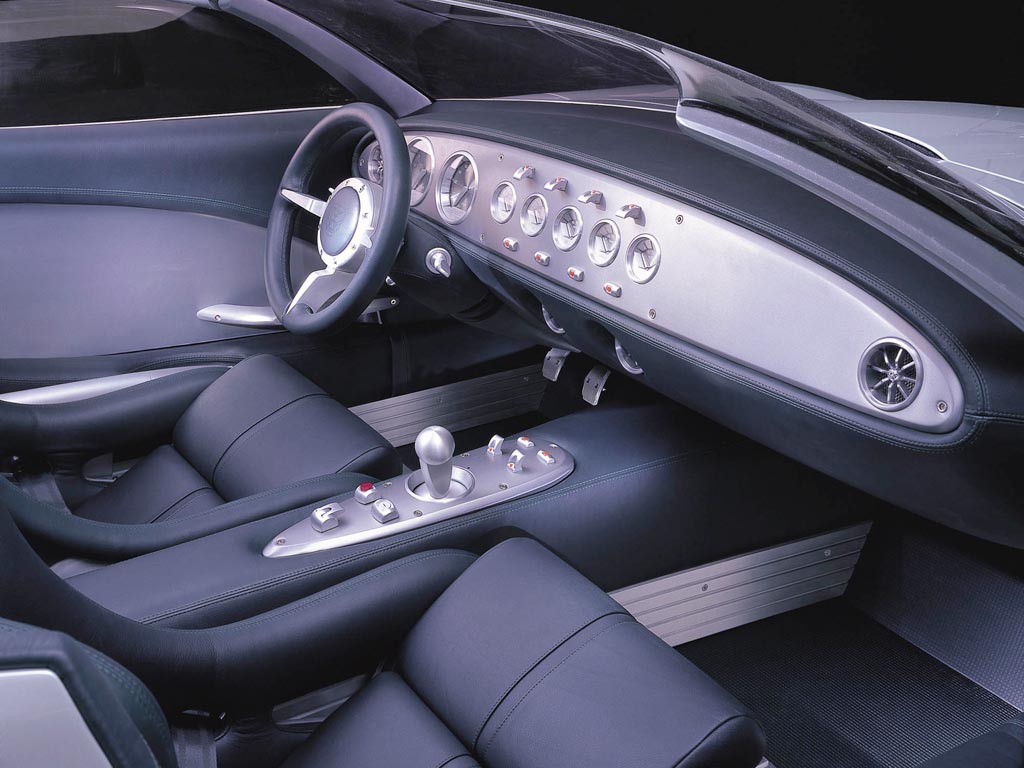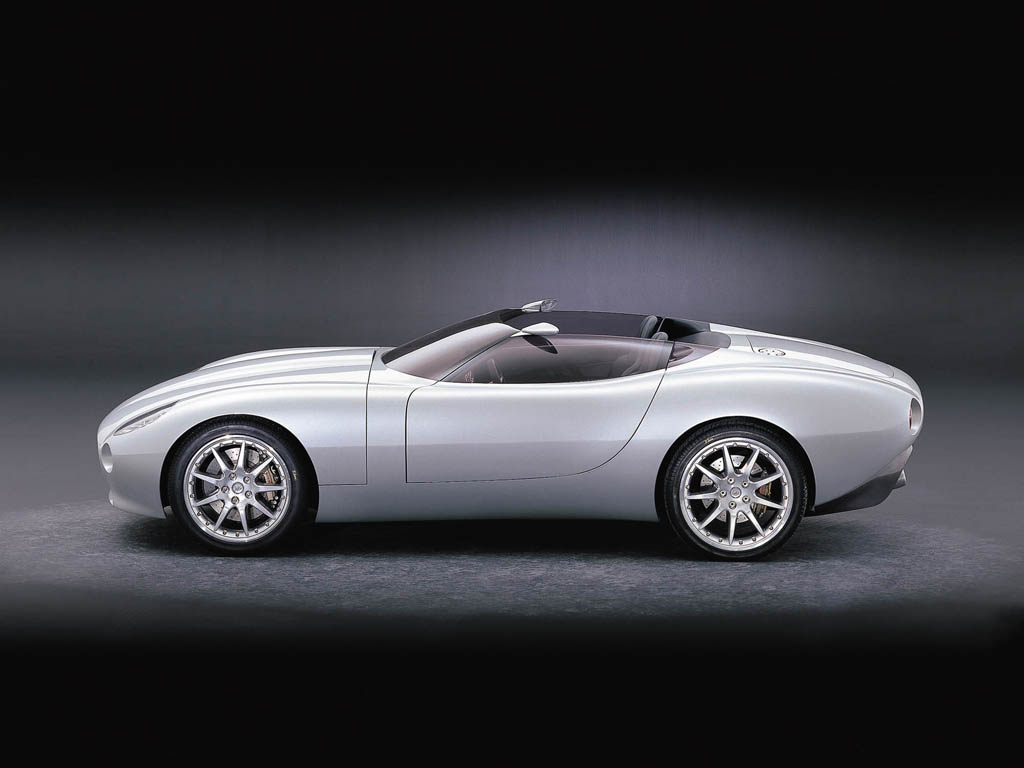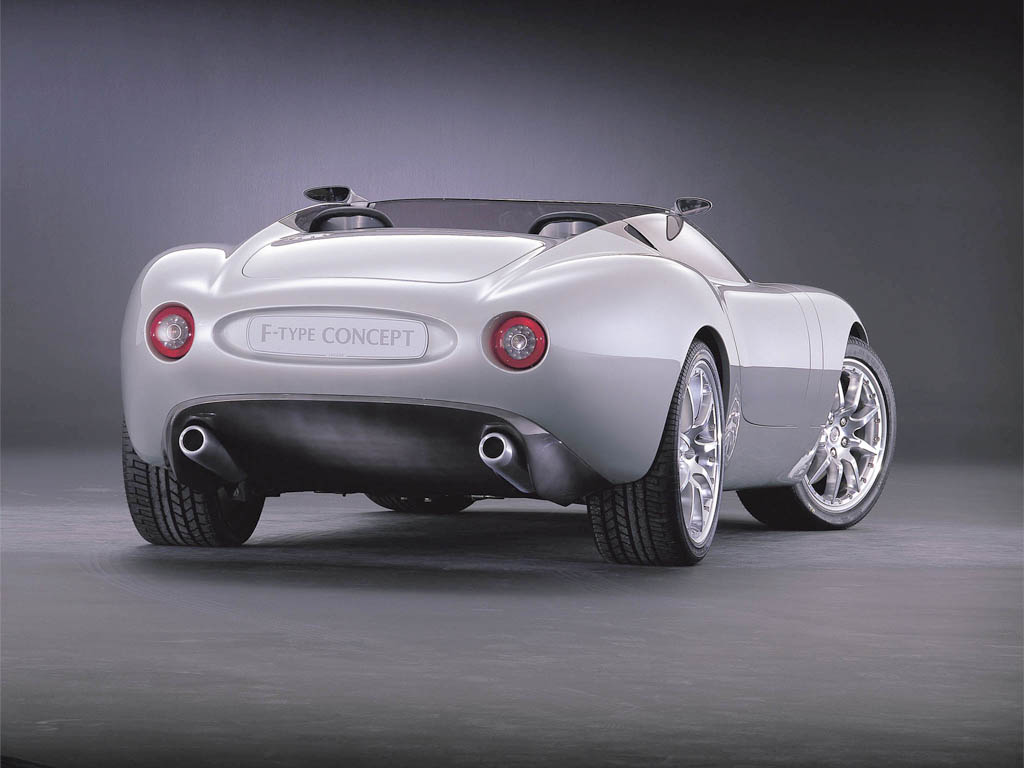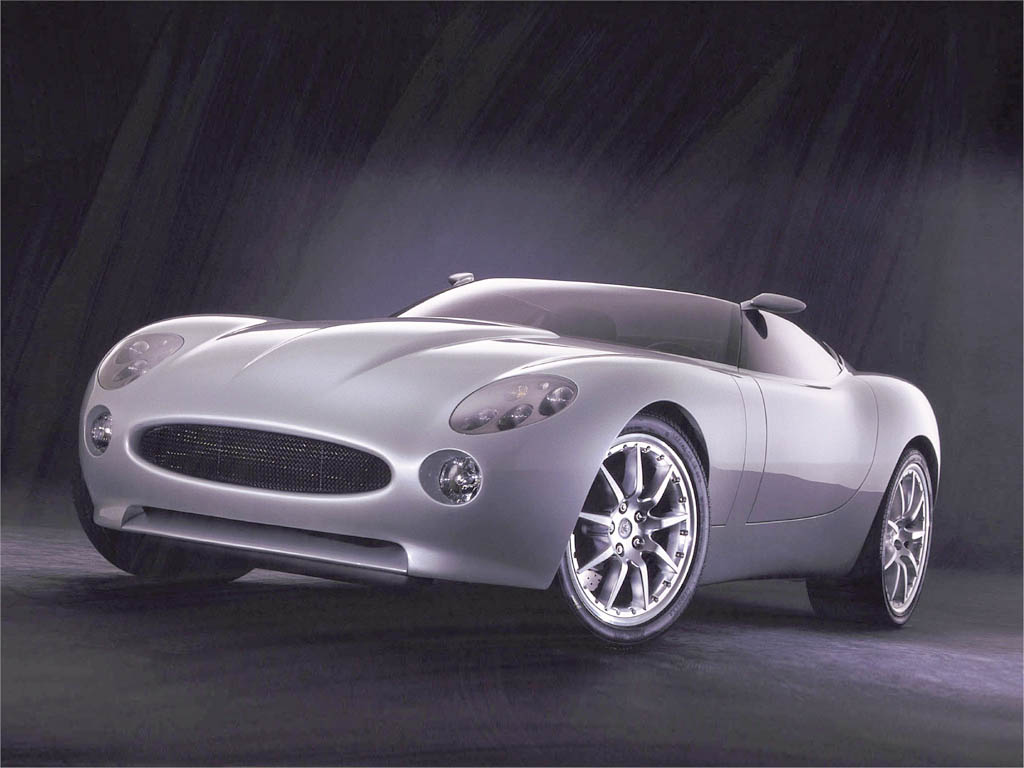2000 Jaguar F-Type Concept
Jaguar’s F-Type Concept roadster was unveiled at the North American International Auto Show in Detroit. Inspired by the XK180 concept car released in at the Paris Salon in 1998, Jaguar designers set out to create the ideal, compact roadster, evoking the spirit of the legendary E-Type.
The F-Type concept, the most compact Jaguar car in more than forty years, presents the company’s ideas for a roadster that would take Jaguar into a new segment of the global market.
The design team, with the responsibility for creating the F-Type, was led by Keith Helfet, whose track record includes the XK180 Concept Car and the XJ220. He was therefore ideally qualified to execute the brief to create an uncompromised Jaguar roadster. Work commenced under the direction of the late Geoff Lawson, Jaguar’s director of styling, who died suddenly in 1999.
The project was completed under the aegis of the new director of styling, Ian Callum, who says the F-Type concept is a tribute to Lawson. ‘Sadly’ he said, ‘This is the last car to bear Geoff’s inimitable stamp. It is a fine example of the standards we will strive to maintain.’
While the XK180 was designed around existing mechanical components, which exercised constraints on the car’s size and layout, the were no such limitations on the F-Type Concept. Heflet and his team were able to create a car which is more compact than the XK180 and 25 inches (645mm) shorter than the XKR, on which the XK180 is based. It is also four inches narrower than both cars.
The design team set out to produce a shape which is contemporary, functional and distinctively Jaguar. To fulfill Jaguar’s core engineering value of equal weight distribution for excellent dynamic performance, the concept dictated both a long cockpit which sits in an ideal position relative to the wheelbase. The resulting design achieves the balanced proportions of a traditional Jaguar sports car, evocative of the E-Type.
The interior of the F-Type Concept, similar to that of the XK180, also draws inspiration from the functional simplicity of the aluminum lightweight E-Type, specifically built for racing. In keeping with the roadster theme, the minimalist interior conveys simplicity and practicality. True to Jaguar tradition, the switches and controls are designed to have utilitarian elegance. Working under Heflet were two young designers, Adam Hatton and Pasi Pennanen, who were responsible for much of the interior detail. Drawing on engineering craft skills within Jaguar, switches and cockpit controls fittings are fashioned from solid aluminum.
The new Jaguar is designed to accept a range of power train options, starting with the 240 horsepower AJ V6 engine successfully introduced in the S-Type saloon, while a supercharged version with around 300 horsepower is also a possibility. Automatic or manual transmissions would drive the rear wheels, while all-wheel drive is a production-feasible option.
‘The F-Type Concept is a clear signal of Jaguar’s intent to return to the true sports car market in which we were so successful in the 1950s and 60s,’ commented Jaguars managing director, Johnathan Browning.
In Detail
| engine | AJ-V6 |
| power | 178.9 kw / 239.9 bhp @ 0 rpm |
| specific output | 40.05 bhp per litre |
| bhp/weight | bhp per tonne |
| torque | Not Available nm / Not Available ft lbs @ 0 rpm |
| driven wheels | Front Engine / RWD |
| f brake size | mm / in |
| r brake size | mm / in |
| wheelbase | 2400 mm / 94.5 in |
| length | 4115 mm / 162.0 in |
| width | 1732 mm / 68.2 in |
| height | 1090 mm / 42.9 in |
| transmission | Auto or Manual |
| gear ratios | :1 |
| top speed | ~251.1 kph / 156.0 mph |
| 0 – 60 mph | ~5.5 seconds |


